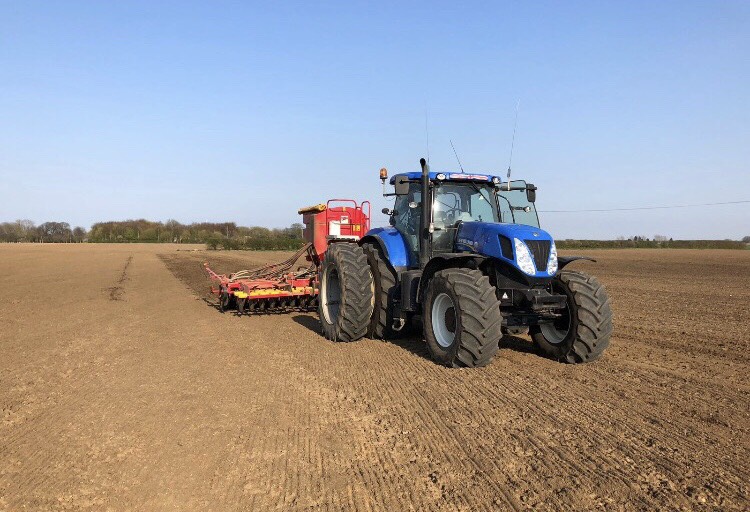Week Beginning Monday 12th March 2018
Posted by Anderson Grain Marketing on May 1, 2018 in AGM News | 0 comments
- The London LIFFE wheat future for May 2018 is unchanged this morning from Friday’s position at £144.75/T. This is £3.00/T higher than the opening trade a week previous.
- The London LIFFE wheat future for November 2018 is unchanged from Friday’s position at £145.75/T. This is just £0.30/T than last week’s opening trade.
- The London LIFFE wheat future for November 2019 is again unchanged this morning at £146.85/T. This is £1.35/T higher than the week previous.
Feed wheat for spot collection is currently valued somewhere in the region of £148.00/T ex-farm. Following the news that Vivergo has once again opened its doors this morning on a ‘temporary basis’, the spot feed wheat market has suffered an extremely volatile week. Current values are firm and buyer interest is good and £150.00/T ex-farm is available to those who are both conveniently located and flexible on collection – please speak with the office to discuss your requirements.
Further forward, buyer demand into the summer months is finally improving with £152.00/T ex-farm offered for July collection this morning. As for milling wheats, the premium market is finally beginning to play ‘catch up’ following a slow start to the week. Soft Group 3 wheats at full specification are currently commanding a £4.00/T – £5.00/T premium whilst full specification Group 1 varieties are commanding an £8.00/T premium.
This month’s World Agricultural Supply and Demand Estimates (WASDE), courtesy of the US Department of Agriculture (USDA) were released on Thursday evening, leaving the global market subdued on Friday whilst the trade digested the numbers. Below is a list of point’s worth noting – all figures are for the current trading season (1st July 2017 – 30th June 2018).
This month’s World Agricultural Supply and Demand Estimates (WASDE), courtesy of the US Department of Agriculture (USDA) were released on Thursday evening, leaving the global market subdued on Friday whilst the trade digested the numbers. Below is a list of point’s worth noting – all figures are for the current trading season (1st July 2017 – 30th June 2018).
WHEAT
- Russian wheat exports are now projected at 37.50 million tonnes, a 1.5 million tonne increase on last month’s estimate. This is a 35% increase on last season’s record and surpasses EU wheat exports by 12.5 million tonnes.
- Wheat exports for the European Union are lowered by 1 million tonnes on last month’s estimate to 25 million tonnes.
- With global supplies rising and total demand falling, world ending stocks are raised 2.8 million tonnes to a record 268.9 million tonnes.
- MAIZE CORN
- Maize corn production in Argentina is forecast at 36 million tonnes, a 3 million tonne decline on last month’s estimate. “Continued heat and dryness throughout February and into early March reduces yield prospects for late planted corn. Yields for early planted corn have also been lower than expected”. For comparison, it is worth noting that last season; Argentina produced 41 million tonnes of maize corn. In the 2015/16 trading season, Argentina produced just 29.50 million tonnes of maize corn.
- As for Brazil, this month’s maize corn production figure is slightly changed at 94.50 million tonnes, down 0.5 million tonnes from February’s estimate.
- Figures for the US have slightly compensated for the expected South American crop losses – this season’s US maize corn export figure now stands at 56.52 million tonnes, a 4.45 million tonne increase on last month’s estimate.
- Global exports are pretty much unchanged at 155.93 million tonnes.
- OILSEEDS
- Global oilseed production is projected at 574.5 million tonnes, a 4.1 million tonne reduction on last month’s estimate.
- Argentina soybean production is forecast at 47 million tonnes, down 7 million tonnes from last month, again due to “lower projected yields resulting from dry conditions through much of the growing region in January and February”. For comparison, Argentina produced 57.8 million tonnes of soybeans last season.
- Brazil’s production is increased by 1 million tonnes to 113 million tonnes.
- Global soybean ending stocks are projected at 94.4 million tonnes, down 3.7 million from last month. Reduced soybean stocks in Argentina and Brazil are only partly offset by an increase for the US.
Although the report may appear bullish, the market had a minimal reaction to the numbers as it didn’t reveal anything too drastic – the trade has been factoring in a poor harvest from Argentina for a few weeks now and it was already expected that crops in both the US and Brazil would compensate. Unfortunately for the sellers, the report overall was more of an affirmation than a game changing statement.
As the wet weather continues for yet another week and farmer patience is tested (to put it politely), local new crop trade appears to have slowed, particularly given that the recent announcement from our friends at Vivergo has encouraged the return of the ‘Yorkshire premium’ within the old crop market.
Further afield, Cocereal have been the first to highlight their concerns by pegging next season’s soft wheat crop at 140.53 million tonnes, a decline of 1.02 million tonnes from the current trading season. According to Agrimoney, the forecast reflected the expectation of a “drop in sowings to a multi-year low of 23.16 million hectares which has been slightly offset in part by a rise in the forecast yield”.
European crop conditions will be worth monitoring over the coming weeks, particularly given that this year’s spring drilling campaign is now underway.
